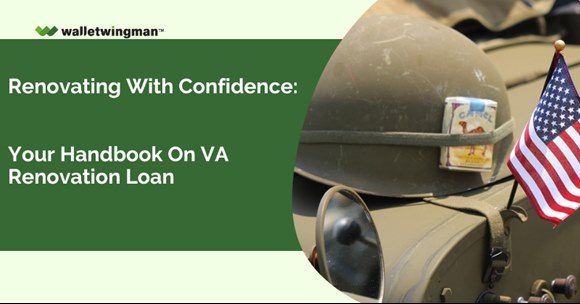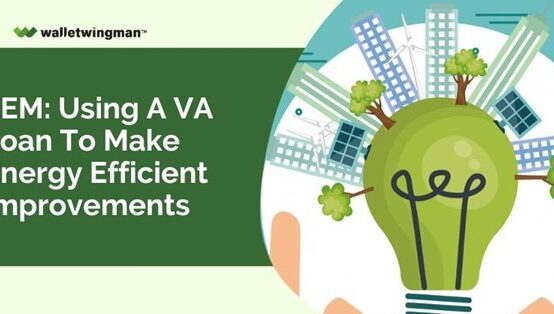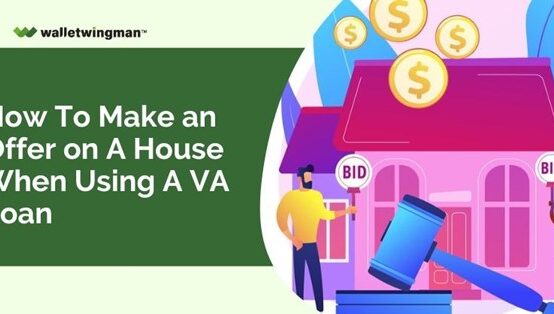Veterans have sacrificed greatly in service to our country. The VA home loan program provides hard-earned benefits to help veterans finance and improve their homes. Furthermore, VA renovation loans allow veterans and military members to purchase a home and finance rehabilitation projects with just one mortgage.
With a VA renovation loan, you can buy a distressed property, make it new again, and get rewarded with your dream home and an improved neighborhood. All while taking advantage of favorable loan terms. This guide will walk you step-by-step through VA renovation loans. Gain the confidence to start your renovation projects and create the home you’ve always envisioned.

Understanding VA Renovation Loans
VA renovation loans help active military, veterans, reservists, and certain surviving spouses finance extensive renovations or repairs needed on a home they wish to purchase. The program allows borrowers to roll the home’s buying price and renovation costs into one loan. That means no hassling with multiple financing products or contractors.
Unlike conventional loans, VA home loans require no down payment. Closing costs can also be paid into the loan amount. Additionally, renovations up to 75% of the home’s value after improvements can be covered. This allows for sweeping, much-needed updates.
With just one closing and likely at lower rates than other financing options, VA renovation loans simplify taking on major remodels. Plus, appraisers evaluate property value based on the expected condition after renovations. This protects buyers from over-improving.
VA Loan Alternatives
The VA offers several loan products that permit financing renovations and repairs along with the purchase price:
Supplemental VA Loan
With competitive interest rates but limited usage, VA home loans benefit veterans yet leave some still searching for options. This is where VA supplemental loans emerge as alternatives worth examining.
Rather than directly originating from the VA itself, VA supplemental loans are private loans that don’t require down payments or mortgage insurance while still catering to veterans. This removes some limitations of VA backing. Loan amounts can surpass regional VA limits to better facilitate purchases in high-cost areas. Those exceeding VA income caps may still qualify by meeting private lender standards.
Additionally, VA supplemental loans allow repeat usage for multiple home purchases rather than imposing once in a lifetime restriction. This grants more purchase power for investment property buyers or those needing to change residences again due to job relocation or family needs.

VA Cash-Out Refinance
A VA cash-out refinance enables homeowners to leverage their available home equity to finance renovations. These loans allow veteran homeowners to tap into their existing home value by refinancing and withdrawing funds to pay for remodeling projects. Often, refinancing with a VA loan provides better rates and terms compared to alternatives.
Furthermore, all closing expenses can also roll into the new mortgage amount. With fluctuating rates and prices, those with a current VA loan may capitalize on favorable market shifts by refinancing and lowering costs. The lump sum payout offers flexibility in planning renovations. Whether minor updates or significant overhauls like kitchen remodels, the cash can cover the costs.
Unlike VA renovation loans paid incrementally, cash-out funds get dispersed upfront, empowering borrowers in hiring contractors. This provides flexibility in hiring contractors interested in conventional rehab loan requirements.
VA Energy Efficient Mortgage
VA EEM loans help buyers or owners make energy upgrades to a home while financing the costs into the mortgage. These loans support renovations that aim to improve energy efficiency, such as:
- Solar panel installation
- Insulation upgrades
- HVAC replacements
- Energy-efficient windows/doors
- Low flow plumbing fixtures
EEM loans empower veterans and military personnel to make their homes more sustainable and comfortable while potentially decreasing monthly electricity costs. These real estate rehab loans also make ecologically friendly upgrades more accessible by offering financing terms of up to 15 years, making the monthly payments manageable.

Renovation Loan Process
Follow these steps for smooth sailing from loan approval to the final walk-through.
1. Get pre-qualified
Work with a lender early on to get pre-qualified for financing. Ensure you meet the credit, income, and service requirements of a loan backed by the VA. Also, be sure your lender specializes in VA products plus renovation loans. This expertise will ensure proper handling of the nuances unique to these projects.
2. Make Offer Contingent Upon Appraisal
Before making an offer, work with your agent to develop realistic cost estimates for renovations. Be as thorough and detailed as possible. Build in extra contingency funds to cover unforeseen issues. Include these projected expenses in your offer, making the deal contingent upon appraisal results supporting property value after improvements. This due diligence protects against paying too much.
3. Appraisal Process
The property will be appraised in its as-is condition and again based on expected value after renovations. This second appraisal ensures planned improvements don’t over-enhance value. Cost estimates will also be evaluated for accuracy.
4. Secure Contractor(s)
Choosing the right contractor is critical for successful renovations, especially when considering buying a fixer-upper with a VA loan. For each major project, vet and solicit bids from at least three appropriately licensed and bonded contractors. Additionally, check reviews and references to verify quality work and reliability.
5. Close on Loan, Start Renovations
At closing, your lender will place all loan funds approved for renovations into an escrow account to be administered by a third party. Having this supervised distribution method ensures renovations stay on track and prevents fraud.
6. Request Final Inspections
As work nears completion, contact your lender to schedule a series of final inspections. First, an appraiser and specialized construction inspector will assess renovations to confirm that the work complies with all requirements and meets industry standards. Then, often, a termite inspector must also approve the final results.
The inspectors will develop a punch list of any deficiencies contractors must address. Work may need to be redone, completed, or corrected before full payment approval. Also, only schedule the final walkthrough or make the last payment once you receive full sign-off from all parties.
7. Final Payment Issued
Only once the home passes all inspections and you have approved the results with a final walkthrough should the final payment be authorized to be released from escrow. Resist demands for final payment until you feel satisfied with the finished renovations.

Final Thoughts
VA renovation loans simplify executing major remodeling projects on purchased homes for veterans, service members, and select spouses. One loan consolidates borrowing—no wrangling multiple funding sources.
Favorable terms, like no down payment or closing costs, provide affordable financing options. When managed carefully alongside experienced lenders and contractors, VA renovation loans enable borrowers to restore, refresh, and remake homes into their dream properties.



 EEM: Using a VA Loan to Make Energy Efficient Improvements
EEM: Using a VA Loan to Make Energy Efficient Improvements  How to Make an Offer on a House When Using a VA Loan
How to Make an Offer on a House When Using a VA Loan 